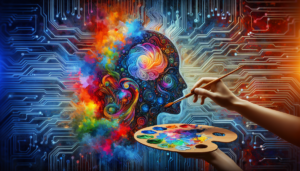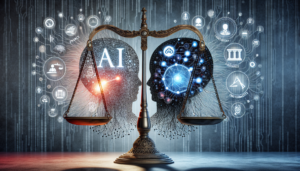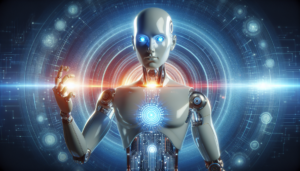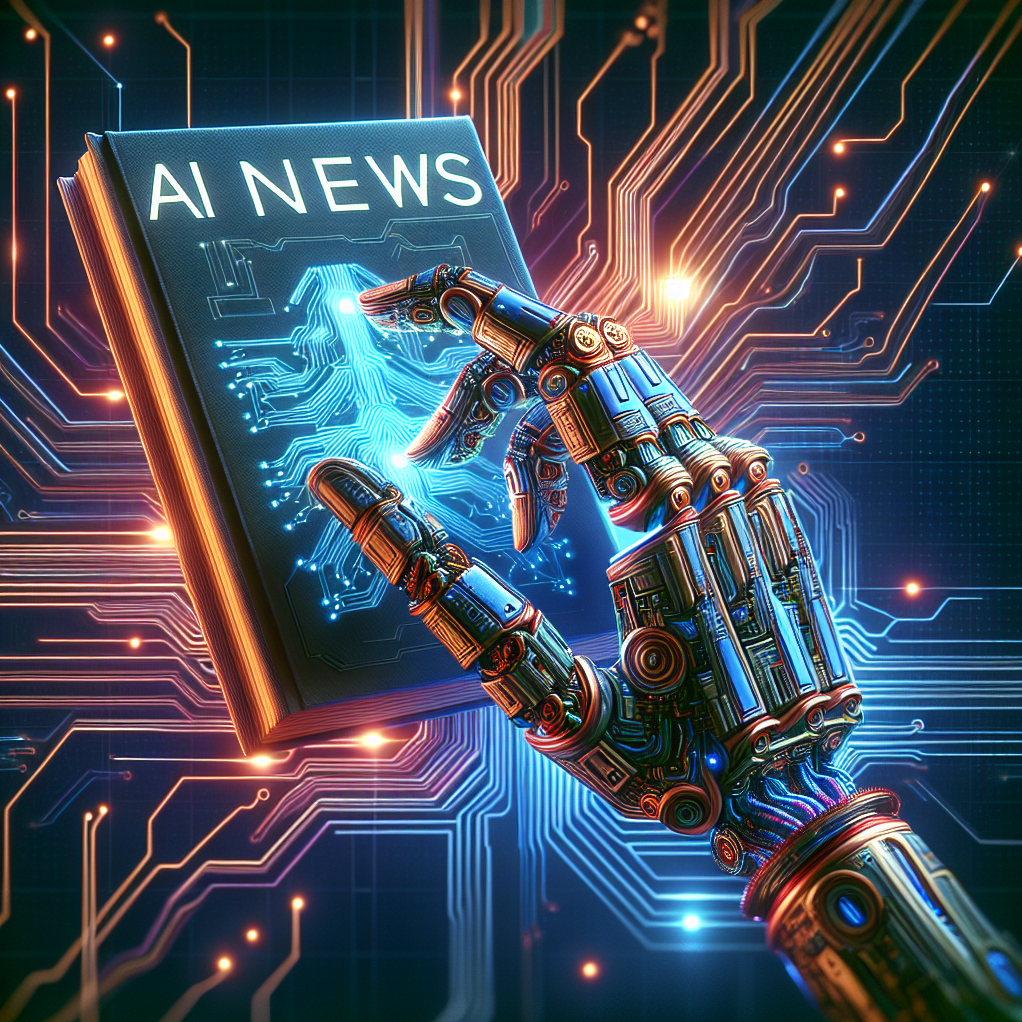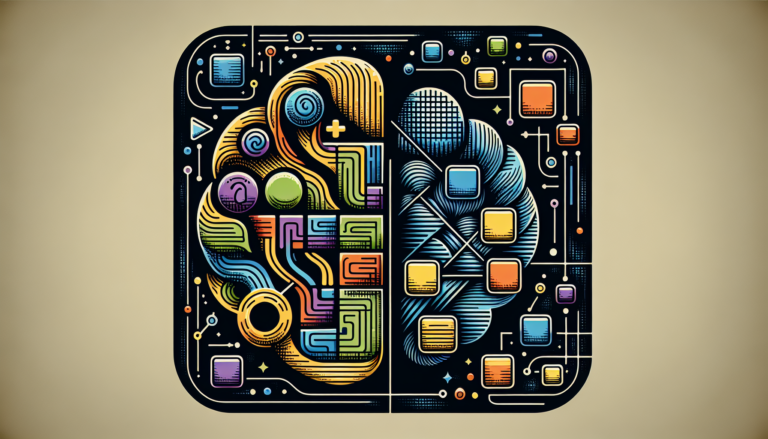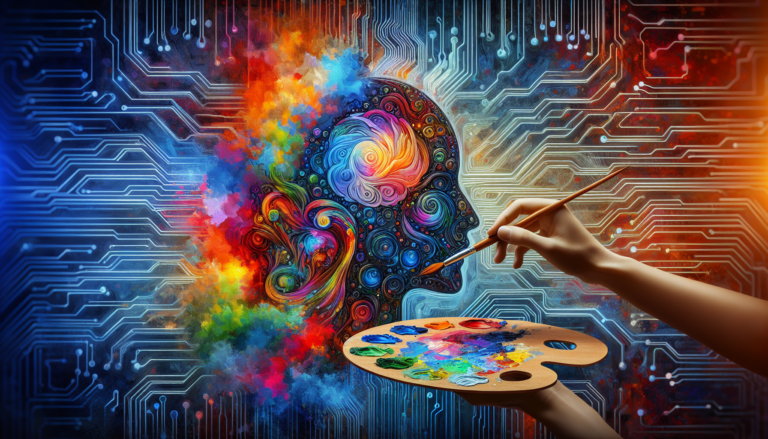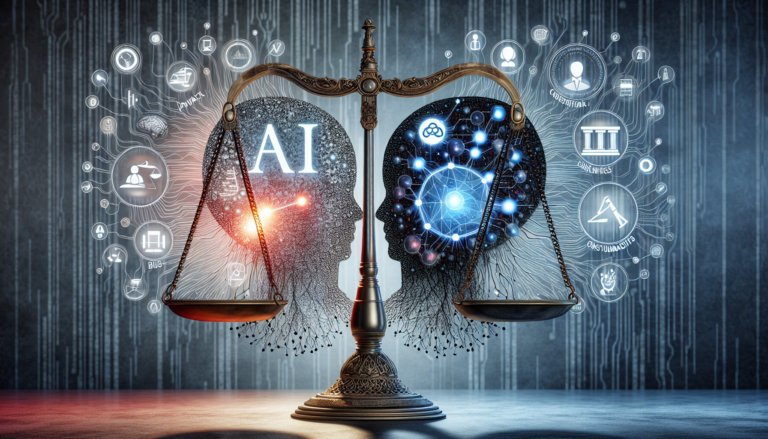Imagine a world where artificial intelligence plays a crucial role in our criminal justice systems. From identifying potential criminals to assisting with courtroom proceedings, the implications of AI in this field are vast and varied. With the ability to analyze vast amounts of data, AI has the potential to revolutionize the way we approach crime prevention and punishment. But what are the potential consequences of relying on AI in such a sensitive and complex area? In this article, we will explore the implications of AI in criminal justice systems and examine the ethical considerations that come with this technological advancement.

Increased Efficiency of Criminal Justice Systems
Automated Data Analysis
AI technology in criminal justice systems has significantly increased the efficiency of data analysis. By automating the process of analyzing vast amounts of data, AI algorithms can effectively identify patterns, correlations, and trends that would be impossible for humans to detect manually. This means that law enforcement agencies can make better-informed decisions and allocate resources more efficiently, leading to a more effective criminal justice system overall. For example, AI can analyze crime data to identify high-crime areas and allocate police presence accordingly, thus deterring criminal activity and improving public safety.
Predictive Policing
One of the most impactful applications of AI in criminal justice is predictive policing. By using advanced algorithms, machine learning, and data analytics, predictive policing systems can anticipate and identify potential criminal activities before they occur. This proactive approach allows law enforcement agencies to allocate resources preemptively, focusing on areas with a higher likelihood of criminal activity. Consequently, this helps in both crime prevention and allocation of police presence, leading to a more proactive rather than reactive approach to law enforcement.
Case Assessment and Prioritization
AI-driven systems are also revolutionizing the process of case assessment and prioritization within criminal justice systems. With the ability to quickly analyze large volumes of case-related data, AI algorithms can assist in identifying relevant evidence, detecting patterns, and even predicting case outcomes. This enables prosecutors and law enforcement agencies to prioritize cases based on their potential impact and allocate resources accordingly. As a result, the criminal justice system can operate more efficiently, ensuring that limited resources are focused on cases with the greatest potential for successful resolution.
Reduced Human Bias and Error
Fair Sentencing
One of the most significant benefits of AI in criminal justice is the potential to reduce human bias in sentencing. Human judges, prosecutors, and juries are vulnerable to their own biases, conscious or unconscious, which can lead to unequal and unjust sentencing outcomes. AI algorithms can be designed to eliminate or minimize these biases by relying solely on objective data and predefined criteria. By taking into account factors such as the severity of the crime and the individual’s criminal history, AI-driven systems can provide more consistent and fair sentencing recommendations.
Risk Assessment and Parole Decisions
AI can also play a crucial role in risk assessment and parole decisions. Traditionally, these decisions heavily rely on human judgment, which may be influenced by subjective factors and personal opinions. AI algorithms, on the other hand, can consider a wide range of objective data points, including the individual’s past behavior, recidivism rates, and other relevant factors. By removing human bias from the equation, AI-driven risk assessment systems can provide more accurate and fair evaluations, ensuring that parole decisions are based on an individual’s actual risk level rather than subjective judgment.
Improved Crime Prevention and Detection
Surveillance Technologies
AI-powered surveillance technologies have revolutionized crime prevention and detection efforts. From facial recognition systems to video analytics, these technologies can analyze vast amounts of visual data in real-time, identifying individuals of interest or suspicious patterns of behavior. By automatically detecting potential criminal activity, law enforcement agencies can respond swiftly, preventing crimes from occurring or apprehending individuals before they can cause harm. Additionally, these technologies can be used to enhance investigative work by assisting in identifying suspects and potential witnesses through sophisticated analysis of surveillance footage.
Forensic Analysis
AI is also transforming the field of forensic analysis, making it more accurate and efficient. By leveraging machine learning algorithms, AI systems can process large volumes of forensic data, such as DNA samples or fingerprints, and identify matches or potential leads with unprecedented speed and accuracy. This expedites the investigative process, allowing law enforcement agencies to solve cases more quickly and efficiently. Furthermore, AI can assist forensic experts in analyzing complex evidence, reducing human error, and adding an additional layer of certainty to the findings.
Ethical and Legal Considerations
Data Privacy
While AI brings significant advancements to criminal justice systems, it also raises concerns regarding data privacy. The use of AI-driven systems necessitates the collection and analysis of extensive personal data, including criminal records, biometric information, and surveillance footage. It is essential that robust data privacy regulations and protocols are in place to ensure that this sensitive information is safeguarded. Additionally, individuals must be informed about how their data is being used and granted the right to consent or opt-out whenever possible, maintaining their privacy and rights throughout the criminal justice process.
Transparency and Accountability
As AI systems become more prevalent in criminal justice, ensuring transparency and accountability is paramount. It is crucial that the algorithms used in decision-making are transparent and understandable, allowing individuals to comprehend and challenge the decisions that affect their lives. Moreover, accountability mechanisms should be established to address issues such as algorithmic biases or errors. Regular audits and independent oversight can help maintain the integrity and fairness of AI-driven systems, ensuring that they serve the interests of justice and the public.

Inequitable Impact and Discrimination
Racial and Gender Bias
While AI has the potential to reduce human bias, it is not immune to biases that may already exist in the criminal justice system. If the data used to train AI algorithms reflects existing biases, the technology may inadvertently perpetuate unfair treatment and discrimination. For example, if historical arrest data is biased towards certain racial or gender groups, the AI system may learn and amplify these biases. Consequently, continuous monitoring and addressing biases within the training data and algorithms is crucial to ensure that AI does not exacerbate existing inequities.
Reinforcement of Prejudice
AI systems utilized in criminal justice can inadvertently reinforce societal prejudices and stereotypes if not carefully designed and monitored. For instance, if an AI algorithm is trained on data that disproportionately represents certain social or demographic groups as criminals, it may perpetuate these stereotypes by disproportionately flagging individuals from those groups for potential criminal activity. Additionally, the risk assessment models used by AI may unjustly stigmatize certain groups, resulting in unfair treatment and limited opportunities. It is imperative to address these challenges by ensuring diverse representation in the development and training of AI systems to mitigate the reinforcement of prejudice.
Controversial Use of AI in Criminal Justice
Robo-judges and Sentencing
One of the most controversial applications of AI in criminal justice is the concept of robo-judges and automated sentencing. While AI can provide objective data analysis and recommendations, the final decisions involving human lives should still be made by human judges who can consider the full context of a case, including extenuating factors and individual circumstances. The idea of fully automated sentencing raises concerns about the erosion of judicial discretion, the potential for biased algorithms, and the loss of empathy and understanding that only human judgment can provide.
Automated Decision-Making
AI-driven automated decision-making processes, such as the use of algorithms to determine bail or parole decisions, also face significant controversies. Critics argue that relying solely on AI systems denies individuals the opportunity to present their case, explain their situation, or provide subjective context. Moreover, if these algorithms are trained using biased or flawed data, they can perpetuate existing inequalities and disproportionately impact marginalized communities. It is crucial to strike a balance between the efficiency and objectivity that AI provides and the need for human judgment and consideration of individual circumstances.
Lack of Human Judgment and Context
Complex Judgment Calls
AI systems excel at processing and analyzing vast amounts of data, but they often struggle with complex judgment calls that require subjective interpretation and contextual understanding. Issues such as intent, moral considerations, and emotional factors may not be easily quantifiable or codifiable, making it challenging for AI to make nuanced decisions. For example, determining whether an action was committed intentionally or accidentally can significantly impact guilt or sentencing. Human judgment remains essential in these situations to ensure that justice is served based on a comprehensive understanding of the circumstances and factors involved.
Emotional and Moral Factors
The human element in criminal justice is crucial when dealing with emotional and moral factors. AI algorithms lack the ability to comprehend or empathize with the emotions, trauma, or remorse of individuals involved in criminal cases. Emotional pleas, expressions of remorse, or signs of rehabilitation may not be effectively captured by AI systems, potentially leading to less compassionate or rehabilitative outcomes. In situations involving juvenile offenders or cases where mental health conditions are prevalent, human judges are better equipped to consider the unique circumstances and ensure appropriate and fair decision-making.
Resistance and Public Trust
Skepticism and Mistrust
The introduction of AI in criminal justice systems may face resistance, skepticism, and mistrust from the public. Concerns about the accuracy, bias, and potential misuse of AI technologies can lead to reluctance in accepting the recommendations or decisions made by AI-driven systems. It is crucial for organizations and authorities implementing AI in criminal justice to proactively address these concerns, promote transparency, and provide evidence of the technology’s effectiveness. Engaging in open dialogues and soliciting feedback from various stakeholders can help build trust and mitigate skepticism surrounding the use of AI.
Over-Reliance on Technology
While AI can enhance efficiency and decision-making processes, relying too heavily on technology poses risks. In criminal justice, over-reliance on AI-driven systems may lead to a diminished role for human judgment and critical thinking. Human insights, empathy, and the ability to consider extenuating circumstances are essential in ensuring fair and just outcomes in the criminal justice system. Striking the right balance between technology and human involvement is crucial to prevent the loss of essential human qualities that are vital for maintaining a fair and compassionate justice system.
Job Displacement and Economic Implications
Loss of Traditional Roles
The integration of AI in criminal justice systems may lead to the displacement of certain traditional roles within the field. Jobs that involve manual data analysis, administrative tasks, or routine decision-making processes may become automated, potentially resulting in job losses. It is crucial for government agencies and organizations to anticipate and manage these changes proactively. Retraining programs, job transitions, and the creation of new roles that leverage the strengths of AI can help mitigate the impacts on the workforce and ensure a smooth transition to the era of AI-driven criminal justice systems.
Need for AI Specialists
While some jobs may be lost due to AI implementation, the increasing integration of AI in criminal justice will also create a demand for new roles. The need for AI specialists, data scientists, and experts who can design, develop, and maintain AI algorithms will grow significantly. These specialists will be vital in ensuring the accuracy, fairness, and transparency of AI systems. Organizations and educational institutions should encourage the development of AI-related skills and provide opportunities for individuals to acquire the necessary expertise to flourish in the evolving landscape of AI-driven criminal justice.
Balancing Technology and Human Rights
Fairness and Accountability
As the use of AI in criminal justice systems expands, it is crucial to ensure that technology is employed in a manner that upholds fairness and accountability. AI algorithms must be continuously monitored and tested to detect and address biases or unintended consequences. Additionally, mechanisms for redress and appeals should be in place to challenge decisions made by AI-driven systems. Balancing the efficiency and objectivity of AI with the protection of individual rights is of utmost importance, ensuring that the benefits of technology do not come at the expense of fairness and justice.
Human Oversight and Intervention
Maintaining human oversight and intervention is indispensable when integrating AI into criminal justice systems. The final decisions involving an individual’s rights and liberties should remain within the realm of human judges, prosecutors, and juries who can exercise judgment, consider subjective factors, and preserve the fundamental principles of justice. While AI can augment decision-making processes, it should serve as an aid rather than a replacement for human judgment. Human oversight ensures that the values of compassion, empathy, and the wider context are taken into account, enabling the criminal justice system to account for the intricacies and nuances of human behavior and experiences.
In conclusion, the implications of AI in criminal justice systems are significant and far-reaching. From increasing their efficiency through automated data analysis and predictive policing to reducing human bias and error in sentencing and risk assessment, AI has the potential to revolutionize the way the criminal justice system operates. However, ethical and legal considerations must be given due attention, especially concerning data privacy, transparency, and accountability. The risk of inequitable impact and discrimination must be addressed proactively to ensure fairness and justice for all. Controversial aspects, such as robo-judges and automated decision-making, should be approached cautiously to preserve human judgment and avoid the erosion of fundamental rights. Moreover, balancing the benefits of technology with human rights and overcoming resistance and mistrust is key to fostering public trust in AI-driven criminal justice systems. By carefully navigating these challenges and striking the right balance between technology and human involvement, AI can play a transformative role in creating a more efficient, fair, and compassionate criminal justice system.





